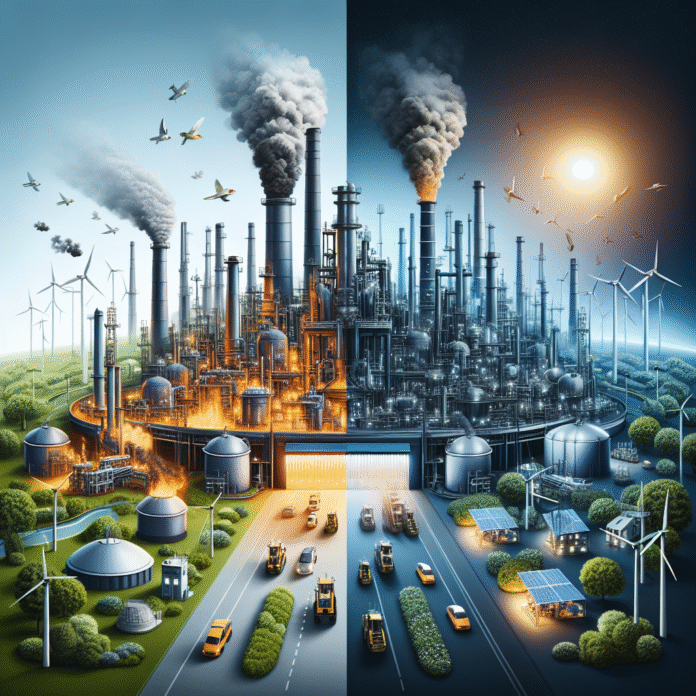Impact of Carbon Capture’s Decline on Industrial Innovation
How the End of Carbon Capture Could Ignite a New Industrial Revolution
As the global community grapples with the urgent need to combat climate change, the spotlight is increasingly on carbon capture technologies. However, recent discussions suggest that the decline of these methods might actually catalyze a new industrial revolution. This shift could transform industries, economies, and our approach to sustainability.
The Current Landscape of Carbon Capture Technology
Carbon capture and storage (CCS) technologies have long been touted as a solution to mitigate greenhouse gas emissions from industrial processes and power generation. By capturing carbon dioxide emissions before they enter the atmosphere, these technologies aim to reduce the overall carbon footprint. However, the effectiveness and scalability of CCS have come under scrutiny, with critics pointing to its high costs and the potential for creating a false sense of security about fossil fuel reliance.
Despite significant investment and research, the deployment of CCS has been slower than anticipated. Many projects have faced technical challenges, regulatory hurdles, and public skepticism. As a result, some experts are advocating for a reevaluation of CCS’s role in our energy transition.
Emerging Alternatives and Innovations
With the potential decline of carbon capture, industries are now looking towards innovative alternatives that focus on sustainable practices and renewable energy sources. Solutions such as direct air capture, bioenergy with carbon capture and storage (BECCS), and enhanced weathering are gaining traction. These methods not only aim to reduce emissions but also enhance resource efficiency and promote circular economy principles.
Moreover, advancements in green hydrogen production, solar energy, and wind power are reshaping energy landscapes. By prioritizing these sustainable technologies, industries can reduce their dependency on carbon-intensive processes, effectively driving down emissions while fostering economic growth.
The Economic Implications of a New Industrial Revolution
The potential end of reliance on carbon capture could lead to significant economic transformations. New industries focused on clean energy, sustainable materials, and innovative technologies could emerge, creating job opportunities and stimulating economic growth. For instance, the shift towards renewable energy sources is likely to require a new workforce skilled in green technologies, fostering educational programs and training initiatives.
Investments in sustainable infrastructure could also lead to the revitalization of regions heavily dependent on fossil fuels. This transition might help to diversify local economies, making them more resilient to market fluctuations associated with traditional energy sources.
Challenges and Opportunities Ahead
While the shift away from carbon capture presents exciting opportunities, it also comes with challenges. Policymakers will need to navigate the complexities of transitioning industries, addressing potential job losses in traditional sectors, and ensuring that new technologies are accessible and equitable.
Moreover, global cooperation will be essential in driving this industrial revolution. International collaboration can foster knowledge sharing, research initiatives, and funding for innovative projects, ensuring that all countries can benefit from advances in sustainable technologies.
Conclusion: A Path to a Sustainable Future
The potential decline of carbon capture technology could serve as a catalyst for a new industrial revolution that prioritizes sustainability and innovation. By embracing alternative energy solutions and fostering a culture of efficiency and responsibility, the world can move towards a more sustainable future.
This paradigm shift not only offers a chance to address climate change but also paves the way for economic growth and job creation in emerging industries. As we stand at the crossroads of this transformation, it is crucial for stakeholders across the globe to collaborate and invest in a sustainable future, ensuring that the next industrial revolution is both green and inclusive.


